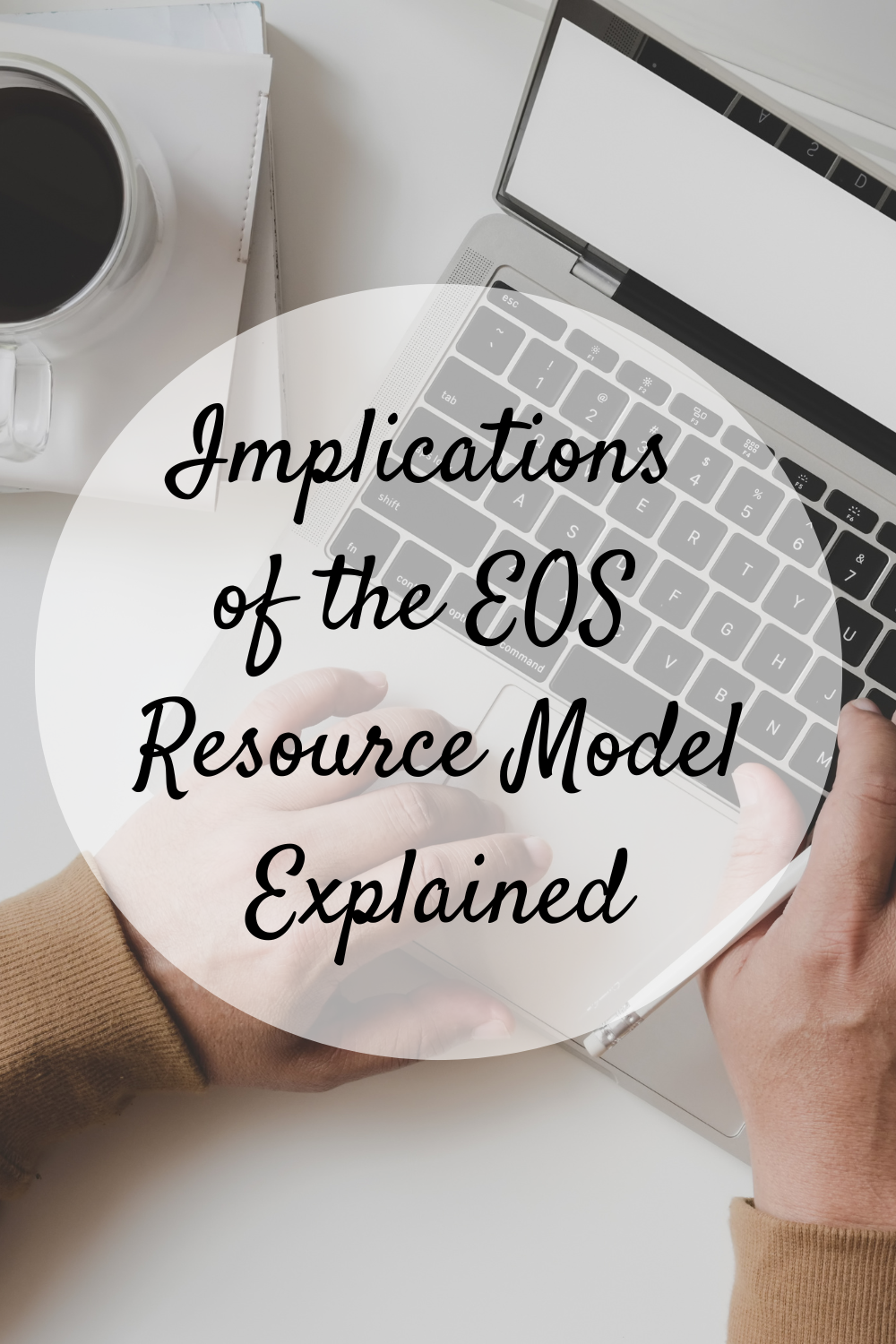

The EOS blockchain has gained significant attention for its unique resource model, which plays a crucial role in ensuring scalability and efficient resource allocation. In this article, we delve into the EOS Resource Model and its implications for users, developers, and the overall ecosystem.
What is the EOS Resource Model?
The EOS Resource Model is a fundamental component of the EOS blockchain that governs the allocation and management of resources for users and developers. It aims to ensure fair and efficient distribution of resources while maintaining the scalability and performance of the network. At its core, the EOS Resource Model revolves around three key resources: CPU, NET, and RAM. These resources are essential for executing transactions, storing data, and running smart contracts on the EOS blockchain. Do less hard work, save your time and trade more efficiently. Click the image below and get started!
CPU (Central Processing Unit) represents the processing power required to execute actions and operations within the EOS ecosystem. It determines the amount of computational capacity available to an account for a given period of time. Users need CPU resources to perform transactions, interact with smart contracts, and execute various operations on the EOS network.
NET (Network Bandwidth) refers to the amount of network resources consumed by an account when sending or receiving data on the EOS blockchain. It measures the bandwidth required for data transfer and communication between accounts. NET resources are crucial for activities like sending transactions, retrieving information from the blockchain, and interacting with decentralized applications (dApps).
RAM (Random Access Memory) is used to store and retrieve data on the EOS blockchain. It is required for the execution of smart contracts and the storage of persistent data. RAM resources enable quick and efficient access to data, facilitating the smooth functioning of dApps and other operations on the blockchain.
To access and utilize these resources, users must stake or hold a certain number of EOS tokens. The amount of resources available to an account is directly proportional to the number of tokens staked. Users can also delegate their resources to other accounts, enabling resource sharing and delegation within the EOS ecosystem.
The EOS Resource Model operates on a system of resource consumption and replenishment. When users perform actions that consume resources, such as executing transactions or deploying smart contracts, the corresponding resources are deducted from their allocated pool. As users continue to consume resources, their available pool gradually depletes.
Implications of the EOS Resource Model
One of the key implications of the EOS Resource Model lies in its impact on dApp development. Developers need to carefully consider resource requirements when designing and deploying their decentralized applications on the EOS blockchain. Since CPU, NET, and RAM resources are finite and have associated costs, developers must optimize their code and resource usage to ensure smooth and efficient operation of their dApps.
Balancing user experience with resource consumption is another critical consideration. Developers need to strike a balance between creating feature-rich dApps and minimizing the amount of resources required to interact with them. By optimizing resource usage and implementing efficient coding practices, developers can enhance user experience while minimizing resource constraints.
Governance within the EOS ecosystem is also influenced by the Resource Model. The allocation of resources is tied to the voting power of EOS token holders. As users stake and hold EOS tokens, their voting power increases, enabling them to influence resource allocation decisions.
However, the governance of resource allocation also presents potential challenges. Ensuring fair access to resources while preventing resource hoarding or monopolization requires careful consideration. The EOS community and its governing bodies must continually assess and refine resource allocation mechanisms to maintain a level playing field for all participants.
Additionally, the EOS Resource Model opens up possibilities for innovative resource marketplaces and resource trading. Since resources can be staked and delegated, users can engage in resource leasing or trading, enabling more flexibility and resource optimization. Resource marketplaces can emerge, where users can buy or rent resources from others, fostering a dynamic ecosystem of resource utilization and collaboration.
Looking ahead, the EOS Resource Model is subject to updates and future developments. Recent updates, such as the EOSIO v2.0, have introduced improvements to the resource management system, enhancing its efficiency and scalability. The EOSIO roadmap outlines plans for further enhancements, including potential optimizations, new resource types, and governance improvements
Conclusion
Understanding the EOS Resource Model is crucial for optimizing resource allocation on the EOS blockchain. By considering resource requirements, balancing user experience, and actively participating in governance, users and developers can unlock the full potential of EOS. The continuous evolution and engagement of the EOS community will shape the future of resource management within this innovative ecosystem.
In recent years, the rapid advancement of blockchain technology and the increasing popularity of cryptocurrency…
Imagine running a business where your office is anywhere with an internet connection, your team…
In an industry historically dominated by exclusive networks and privileged connections, Canary Wharfian has emerged…
From weatherproof TVs to premium audio, outdoor living is going high-tech across the metro area.…
Singapore, known for its vibrant culture, stunning architecture, and world-class attractions, is a top destination…
In the current world where time is of the essence, it should be easy and…
This website uses cookies.